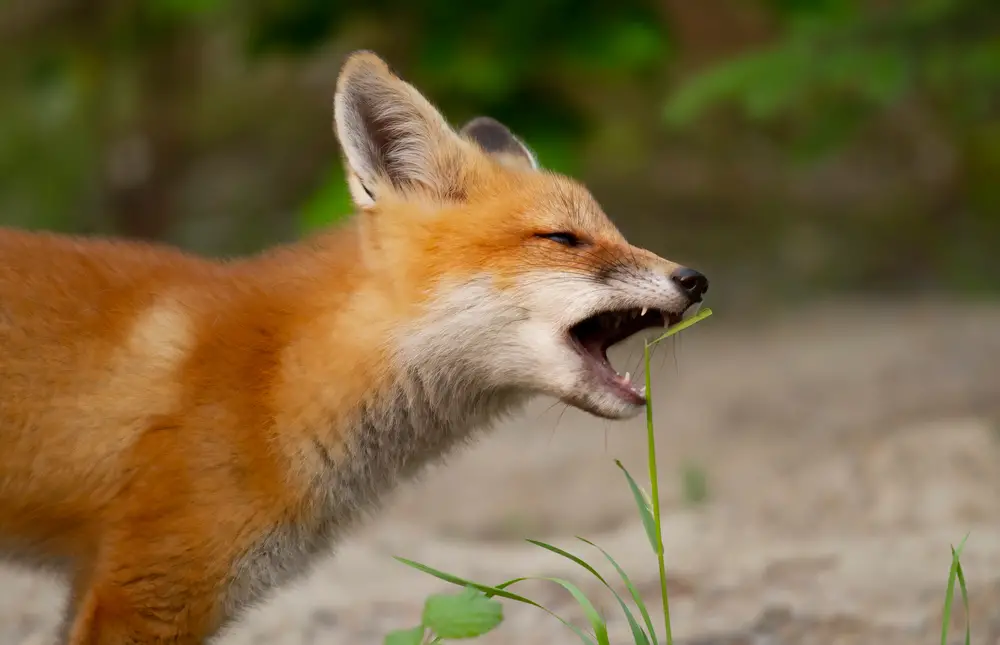This spring I was lucky enough to watch a family of foxes frolic, play and grow. Their den, located across from my house, housed 6 kits. I watched their mom bring some peculiar types of food for them to eat. One day I saw her carrying the largest mushroom I’d ever seen down the street. Prancing with joy, knowing her babies would be fed.
This made me curious, and I wondered, What do foxes eat, besides mushrooms? What other foods are in their diet Are they mainly carnivores or do their eating habits primarily consist of greens and grubs?
From what I saw their meals included mushrooms, fish, and groundhog pups. I even saw a dog toy placed lovingly outside the front of the den!
In this article, I’ll share all about fox feeding habits. From seasonal eating to urban vs. rural foxes, I’ll also dig into the different stages of growth and what the kits need to best survive!
Fox Diets
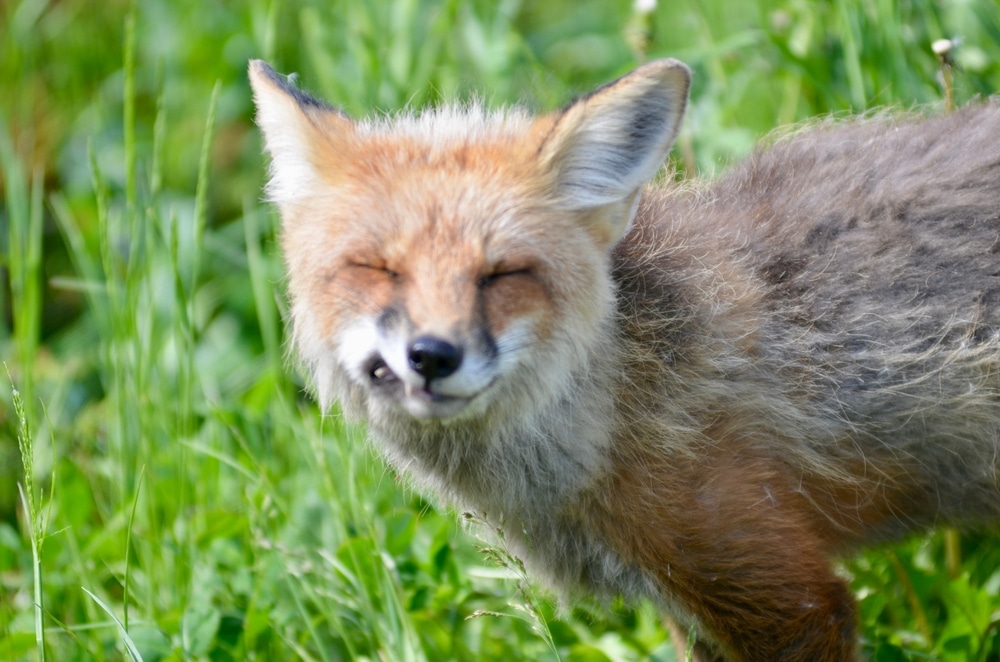
Opportunistic Hunters: The Diverse Diet of Foxes
Foxes are opportunistic omnivores. This means they eat meat, veggies, fruits, and plants. They hunt in an opportunistic way, meaning they will eat anything they can get their paws on! This includes scavenging for carrion and easy hunting opportunities.
Foxes are nocturnal hunters, so they spend their nights looking for food. Their diet is dependent on their age and the season.
Types Of Foxes And Their Diets
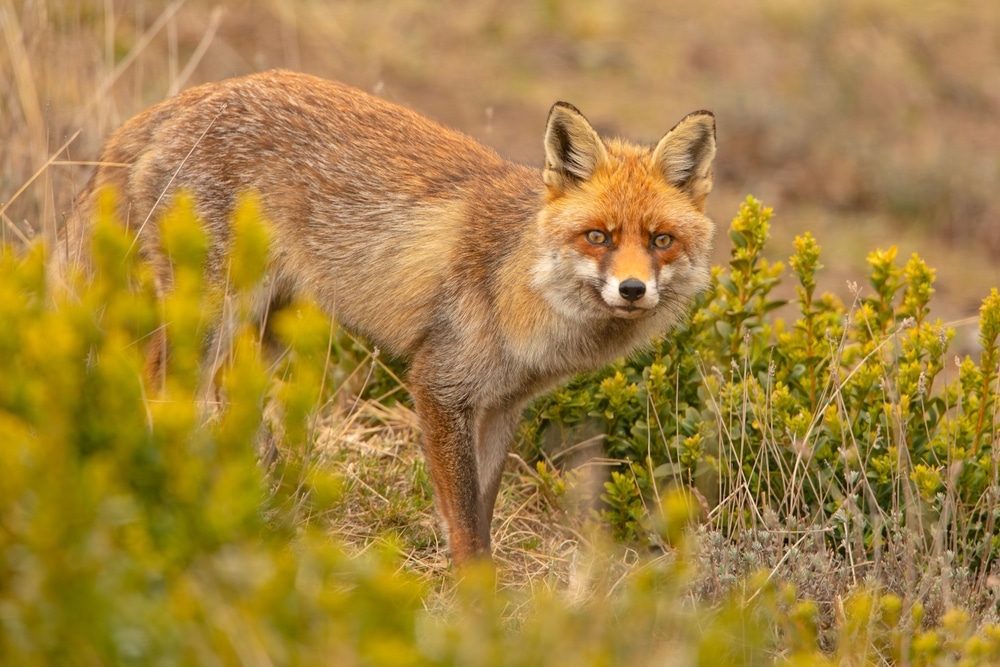
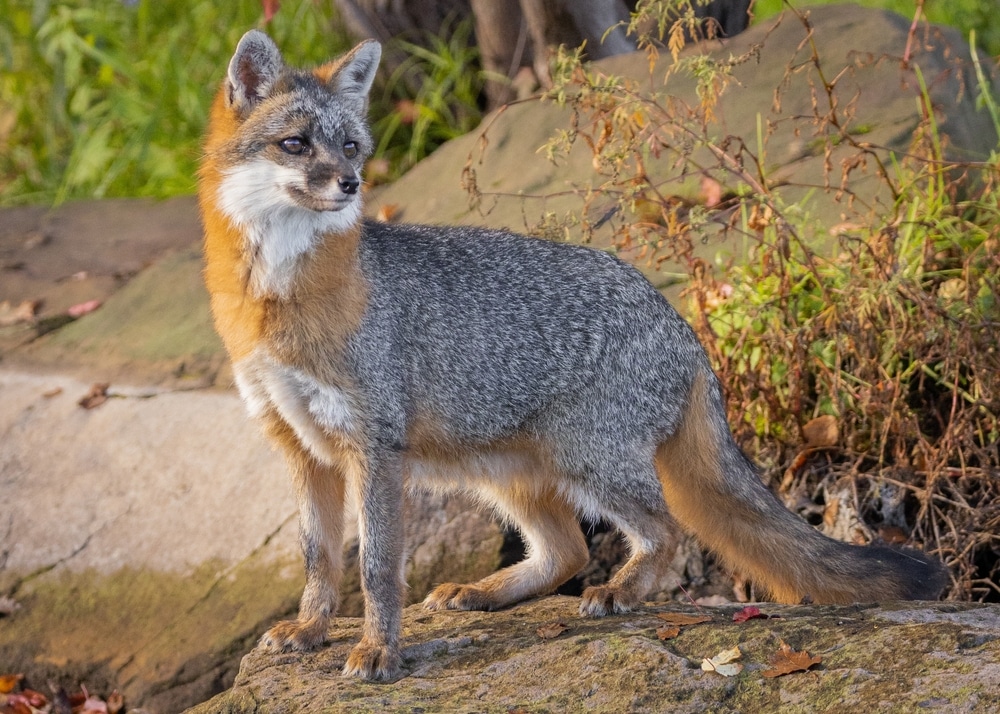
Differences In Diet Between Species
There are several different types of fox species that reside in North America. The species we will focus on in this article include the red fox and the gray fox. These species have similar diets, but there are a few differences between what red and gray foxes eat.
What Do Red Foxes Eat?
Red foxes are more urbanized than gray foxes. They have a high population. Because of their urbanized nature they are great at catching rodents like rats and mice. Red foxes also enjoy eating:
- Bugs
- Fruit
- Reptiles
- Bird eggs
- Crabs
- Fish
- Small mammals
Red foxes’ also catch and store food for later. This comes in handy during the winter months when food is limited.
What Do Gray Foxes Eat?
Gray foxes are more rural and live in less populated areas. This means their diet has a higher proportion of meat. This animal’s diet will consist of:
- Rabbits
- Rodents
- Eggs
- Small mammals
- Small birds
- Even baby deer
Gray foxes will eat and forage for native fruits like blackberries, grapes, apples, persimmons, and juniper berries.
Because their diet mostly consists of meat, the gray fox does not cache their food.
Diet Through Life Stages
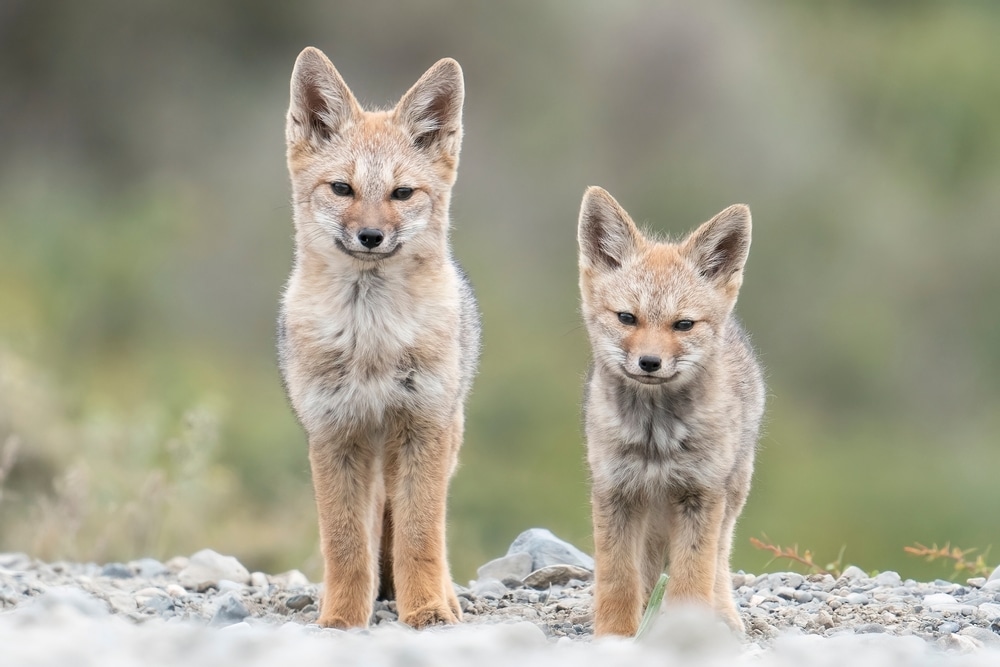
Newborn Foxes
Newborn foxes are altricial. This means that baby foxes are born blind and are reliant on their mothers for the early stages of life. They are dependent on their mother and drink her milk until about 4-6 weeks of age.
4-6 Weeks
Between 4 to 6 weeks, the kits are introduced to solid food. Their diet relies heavily on insects and earthworms. They are also taught at this time a technique called “worming.”
Worming is a skill taught by their mother. It involves using sound to locate the worms, a pouncing method, then teasing the worm out gently, so as not to break it.
Amazingly, from August through September 60% of a young fox’s diet consists of earthworms, along with other insects.
At this time young foxes are also eating beetles, slugs, snails, butterflies, moths and other small insects.
6 Weeks To 5+ Months
As the kits develop into adults, the fox diet expands to include fruits and vegetation. Summer and fall provide an abundance of fruits and veggies for the foxes.
This includes blackberries, corn, barley, blueberries, raspberries, cherries, persimmons, mulberries, apples, plums, grapes, dates, figs, and even acorns.
Their diets become more complex and they begin to eat nuts (especially hazelnuts), grasses, sedges and tubers, and mushrooms.
As they develop their hunting skills, the young foxes start to hunt mammals like voles, squirrels, and small rodents. They also scavenge carrion. They begin to learn prey and scavenging habits to prepare for their first winter ahead.
Seasonal Diets
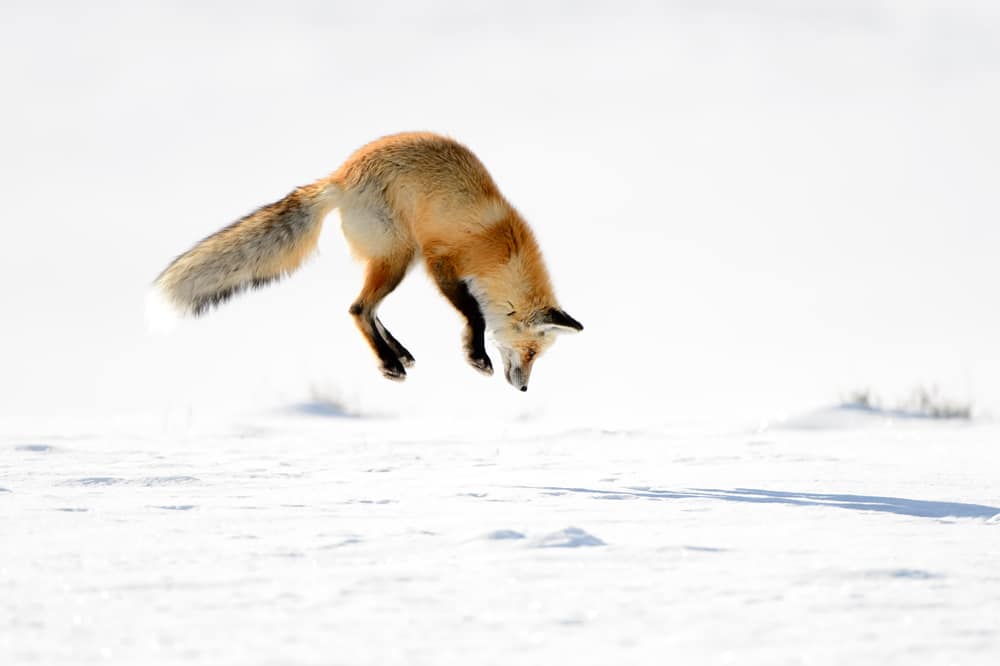
Seasonal Shifts in Foxes’ Diets
Foxes’ food sources depend on the seasons. Spring through to Fall offers a variety of available food. As options grow scarce in the Winter, they rely on stored fats and their scavenging abilities. Foxes’ diets in the wild are dependent on what other animals and plants live and grow in the area.
How Foxes Adapt to Changing Food Sources
Just like growing a garden, there are different foods available at different times of the year. Let’s have a look at fox diet during different times of the year:
Spring
A fox’s diet in the spring is mainly insects and emerging vegetation. Their diet can also include small mammals at this time, especially new young born in spring. Worms make up a large portion of a fox’s diet at this time.
Summer
When food is at its most abundant, a fox’s diet in the summer includes lots of fruits, like berries! Increased hunting activity is also common and their diet expands to include scavenged fish, small mammals, plants, insects and anything else that may seem appealing and easy to catch.
Autumn
A fox’s diet in the fall includes everything that they’ve been eating in the summer as well as seasonal veggies, mushrooms, and nuts that emerge at this time.
Winter
Adapting to a limited food source, a fox’s diet in the winter focuses on increased reliance on stored fat and scavenging.
Urban vs. Wild Fox Diets
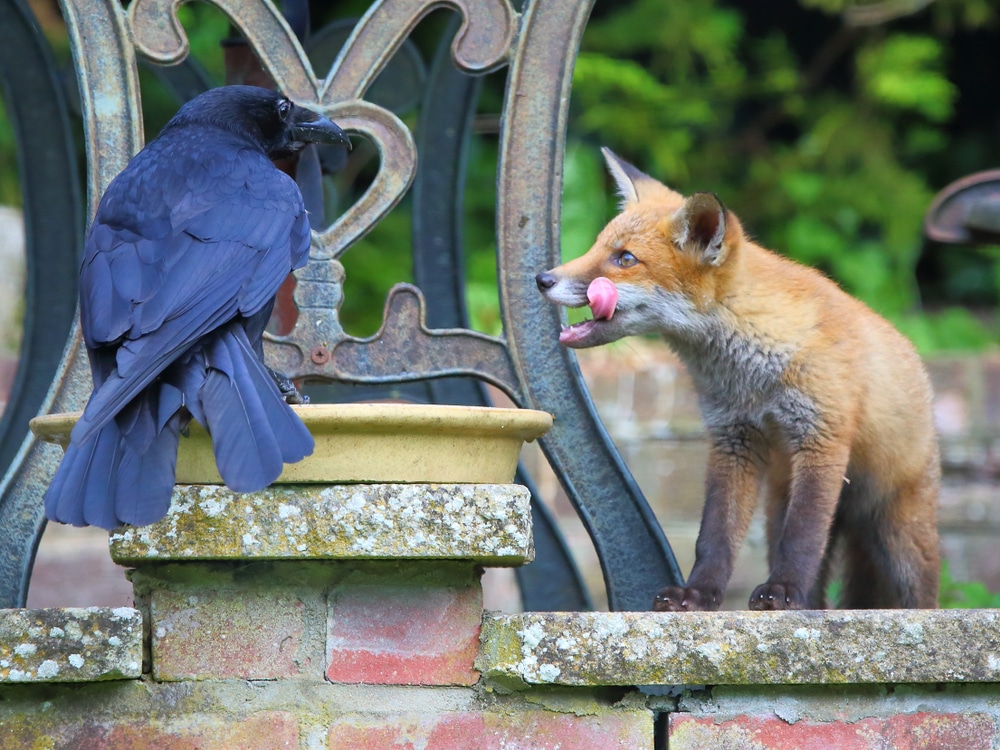
Urban Fox Diet
The red fox is considered to be an urban fox. Urban foxes are more likely to scavenge garbage bins for morsels of food.
Their diets are more focused around human leftovers and animals that thrive in urban areas. They are great at hunting rodents like rats and mice. They also eat bugs that thrive in urban areas.
Wild Fox Diet
To clarify for this article, when we talk about wild foxes we are referring to foxes that live in areas with little to no anthropogenic disturbances. This means they are far enough away from people that they do not, or have very little, interaction or reliance on them.
Wild foxes can be both red and gray foxes, although gray foxes are more likely to live remotely away from the eyes of humans.
Wild fox diets have a higher percentage of meat intake. This is typically in the form of small mammals, reptiles, and birds. Other foods typically eaten by a rural fox include native berries and other fruits, roots, shoots, and tubers of plants.
If foxes live near a water body, their diet can include crayfish, fish, snakes, frogs, and even turtles.
Impact Of Human Activity On Fox Diets
The amount of anthropogenic disturbances affects fox diets. As stated before foxes living in urban areas are more likely to scavenge for human-made food.
This can include food left over in garbage bins and high portions of rodents like rats and mice, as these species thrive in urban areas.
Diet Of Foxes In Captivity
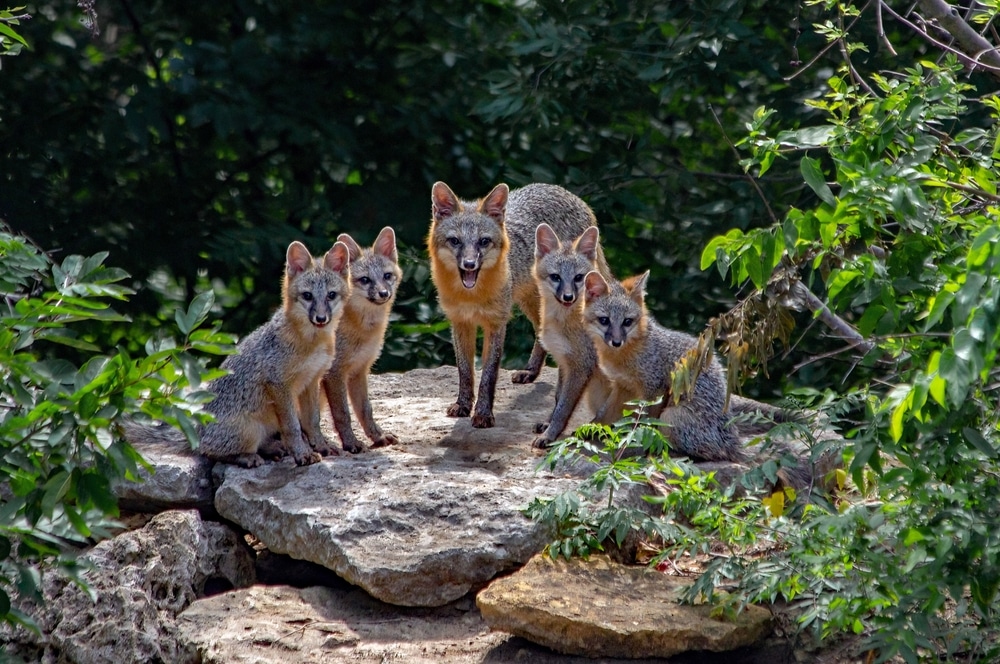
A fox in captivity includes foxes that live in zoos, rehabilitation centers, and even pets. In areas of eastern europe like russia, foxes are popular pets.
Their diet in captivity can resemble that of a regular pet dog with some alterations. They do not hunt for their meals so they are completely reliant on humans for survival.
What to Feed Foxes in Captive Care
Foxes in captivity are fed a high portion of grain-free dog food. Their diet also includes raw meat. This includes lean meats like chicken, rodents, rabbit, and venison.
Whole prey portions are important, as it simulates life in the wild. This can look like whole rodents like rats and mice, as well as rabbits. Rodents are easy to source and therefore a large portion of captive fox diets.
Differences In Diet From Wild Foxes vs. Foxes In Captivity
One of the major differences is not just diet but how the foxes are fed. Foxes in captivity rely solely on humans for sustenance. This removes the internal prey drive that wild foxes have.
Another difference in diet is going to be seasonality of eating, location of foxes, and food availability. Captive foxes will have a better year-round diet and are not required to scavenge in the winter. Similar foods will be available to them year-round, in comparison to wild foxes which live and eat as the seasons change.
Common Prey and Food Sources
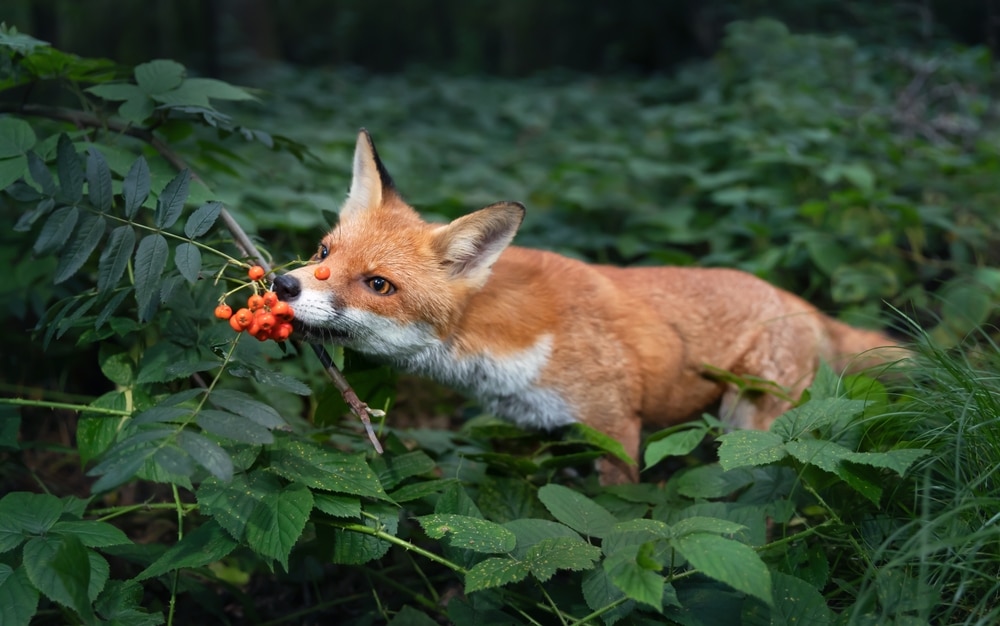
Fox Prey
Common prey species for foxes are a variety of small mammals. Some of these animals include:
- Rabbits & Hares
- Squirrels
- Mice
- Rats
- Muskrats
- Groundhogs
- Small birds & eggs
- Frogs and Toads
- Turtles
- Snakes
How Foxes Adapt Their Diet to Survive in Various Habitats
Fox diets depend heavily on their habitat.
Red and gray foxes have similar diets because they live in similar habits. It can be noted that red foxes live closer to humans and therefore their diet consists more of scavenged food and garbage left out by humans.
A great example of fox diets based on habitat is the difference in diets between a gray fox and a kit fox.
Kit foxes live in the desert. This means their diet is specialized to their ecosystem. This includes kangaroo rats, different species of mice, and ground-nesting birds like quail.
Gray foxes typically live in remote forest habitats . This means their diet has a higher portion of small mammals, like squirrels, rabbits and groundhogs.
Fish Consumption

Foxes Ability To Catch Fish From Ponds
Can A Fox Catch Fish Out Of Your Pond?
Yes, it is possible for foxes to catch fish from your pond but it would have to be convenient enough for the fox to do so.
It is not super common for foxes to eat fish out of a pond, but if it was shallow enough for a fox to catch a fish, they would try!
Foxes are more likely to eat fish if they are dead on the shore.
Strategies To Protect Fish From Foxes
If you are struggling with fox eating your pond fish do not fret! Listed below are some tips to help protect your pond fish from foxes.
How To Protect Your Fishes from Foxes
- Netting to cover the pond
- Fencing around the pond
- Decoys can distract and deter foxes
- Dogs on the property
- Lots of aquatic plants for fish to hide
- Deep ponds so it’s hard enough for the fox to catch the fish
Nutritional Needs of Foxes
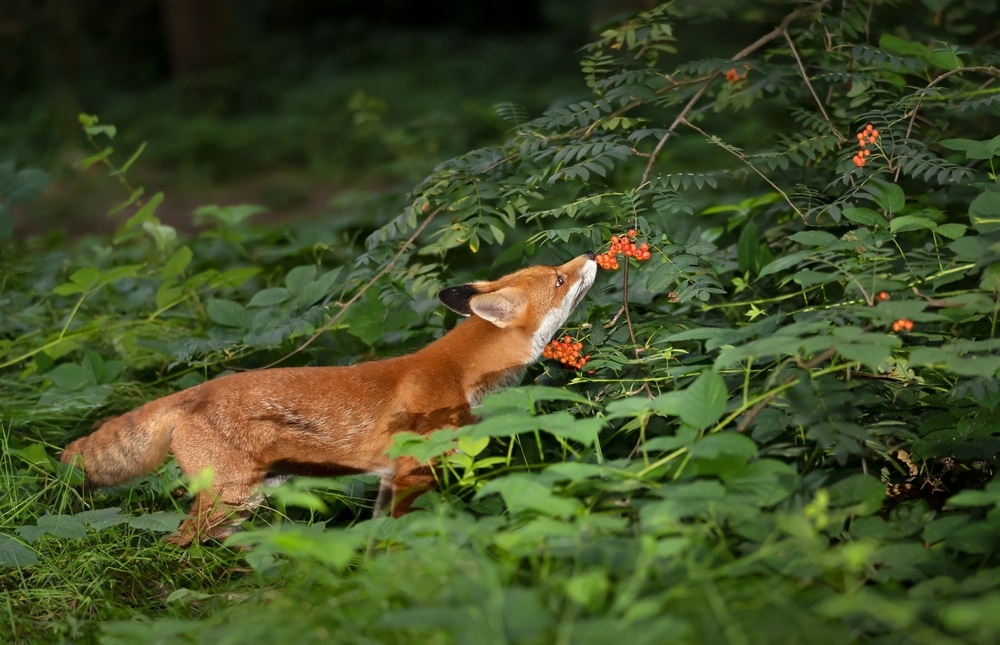
Essential Nutrients for Foxes to Stay Healthy
Foxes need certain dietary requirements to stay healthy.
One of the most important components is the amino acid Taurine. Taurine is an amino acid only found in raw meat and organs. Foxes’ health heavily relies on Tarine. Without it, major health implications including seizures and blindness can occur. Therefore, foxes need raw meat, bone, and organs in their diet.
Other diet requirements for foxes include protein, plant matter, and eggs.
How Often Do Foxes Eat?
It is not how often foxes eat but more about how much they eat in a day. Foxes eat about 1lb of food a day. This depends on protein intake and nutritional value of the meal. If foxes are eating a meal with high protein they will need to eat less.
Impact Of Diet On Fox Behavior
Because foxes are generalists, feeding behavior can be directly linked with available food sources. When food sources are low, eating habits like scavenging and caching become more common.
If there’s an abundance of human food available, foxes are known to hunt less and focus on food that is more easily attainable.
If there is an abundance of food available in general, foxes gain confidence and can become picky when deciding what to eat.
Foxes Role In The Ecosystem

Foxes are playful, inquisitive creatures that add to a biodynamic ecosystem.
- They help keep down populations of troublesome animals, such as rodents
- They aid in seed dispersal which helps diversity and ecosystem regeneration
- Their scavenging helps recycle nutrients
- They are an indicator species, which means their health reflect broader environmental changes or impacts
We can live harmoniously together with foxes by better understanding their behavior, respecting their territory, and enjoying them from a distance.
FAQs
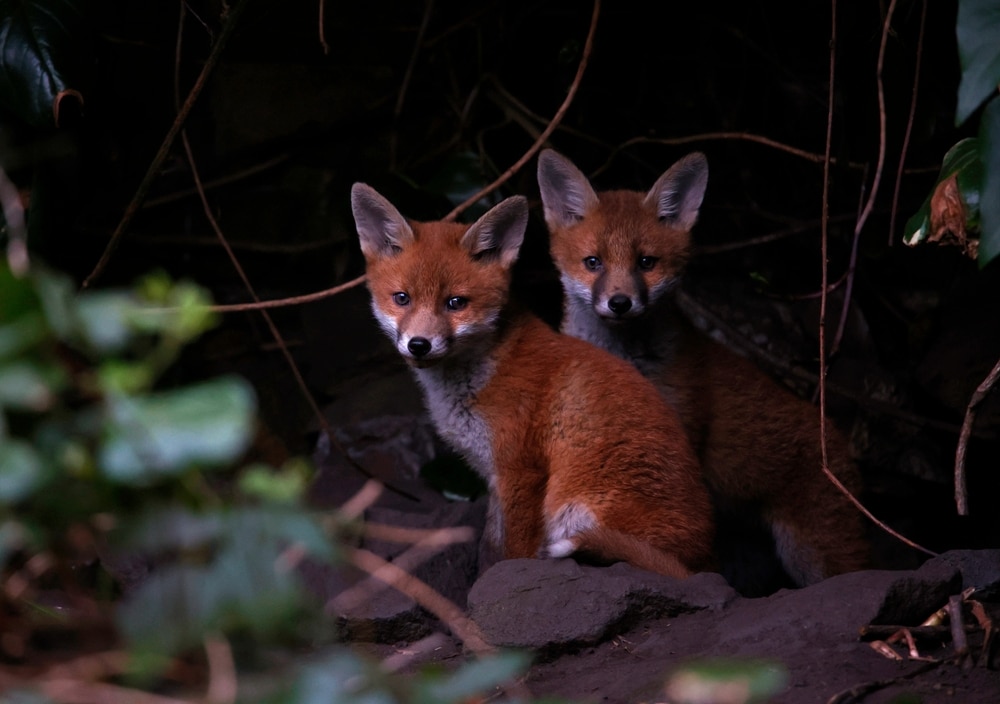
Are Foxes Dangerous To Humans?
Typically, healthy foxes are not dangerous to humans. Generally, they are afraid of humans and avoid them. It is important to always respect foxes as they are predators.
Give them space and never harass them.
An unhealthy fox who has contracted mange or rabies can be dangerous to humans. These diseases cause foxes to become more aggressive and less fearful of humans. Some symptoms of both mange and rabies include a mangy coat, lethargy, disorganized walking abilities, and overly aggressive behavior toward people.
Humans can contract rabies if they are bitten by a fox. It is not possible for humans to contract mange.
It is extremely important to report a fox exhibiting these behaviors. If you see a fox with any of these symptoms, or other symptoms that seem worrying, immediately contact a local wildlife rehabilitation center, animal control, or local police.
Can Foxes Eat Human Food?
Foxes are opportunistic scavengers and will eat human food. Especially red foxes that live in urban areas.
Never leave food out for foxes. It can actually be illegal to feed wild animals in some areas.
Can Foxes Eat Pet Food?
In captivity, foxes are typically fed dog food in the form of dry biscuits and wet food.
It is not recommended to feed wild foxes with pet food. We should not interfere with their natural hunting and scavenging habits. It can make them reliant on humans and unable to look after themselves.
What Is The Biggest Threat To Foxes?
Do foxes have any predators?
Yes, foxes do have predators. The largest threat to foxes is humans. This is through the form of hunting, trapping, road collisions, and exposure to poisons.
Other predators of foxes include:
- Cougars
- Bobcats
- Lynx
- Coyotes
- Wolves
- Bears
- Eagles
Are Foxes Omnivores Or Carnivores?
Foxes are omnivores. This means they eat a variety of both meat and greens.
Can Foxes Eat Nuts?
Yes, part of a fox’s diet includes the foraging of nuts and seeds. An essential trace element that many animals require in small doses is Molybdenum. This element helps to metabolize proteins, carbohydrates and fats. Nuts are a wonderful source of this trace element.
Due to seasonal eating, foxes are able to forage for nuts more abundantly in the fall.
What Is The Role Of Foxes In The Ecosystem?
Foxes’ role within the ecosystem is to help keep small mammal populations at bay. This includes small mammals that are considered “pests” like rats and mice. Their role is to keep small mammal populations healthy and stop them from overpopulating.
Where Are Foxes In The Food Chain?
Within the food chain, foxes are considered meso-predators. This means they are not at the top of the food chain but are mid-ranking in the category of predators.
How Do Foxes Help Control Rodent Populations?
Foxes help control rodent populations by hunting many species within the family of Rodentea. This includes species of rats, mice, voles, moles and muskrats. By eating these animals they help to stop the overpopulation of them and keep rodent populations within a healthy balance.
What Are The Signs Of A Healthy Fox?
Shiny, full fur coat, bright eyes, and alert. Healthy foxes also move in an organized manner and are weary of humans.
Some signs of an unhealthy fox include a mangy coat, lethargic, disorganized in its walking abilities, or overly aggressive toward people.
If you see a fox behaving in this manner it’s important to report it to a local wildlife organization, animal control, or the police.
Can Foxes Eat Birds?
Yes, foxes eat birds as well as their eggs. They specialize in ground-nesting birds like quail but will definitely eat all types of birds If they can catch them!

